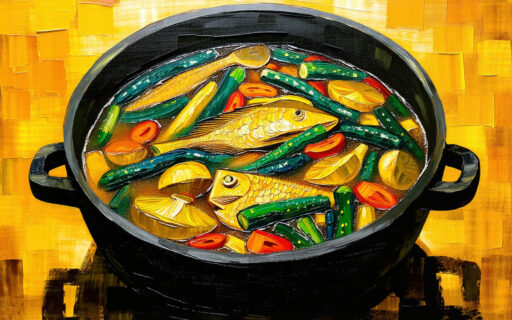- #For groups
-
きりたんぽ鍋
Kiritanpo Nabe is a traditional hot pot from Akita Prefecture, featuring grilled mashed rice skewers called kiritanpo. It’s simmered with chicken, burdock, and mushrooms in Hinai chicken broth, where the rice absorbs the rich umami flavor.
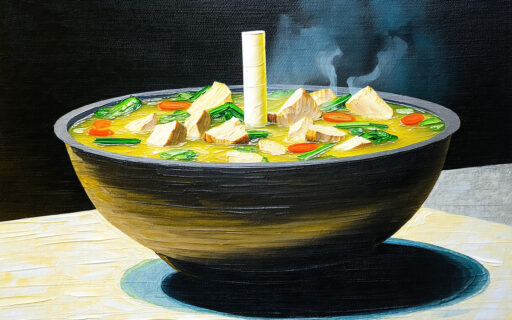
-
串揚げ
Kushiage is a dish of skewered meat, vegetables, or seafood coated in batter and deep-fried. In Kansai, it is also known as “kushikatsu.” Crispy outside and juicy inside, it’s a popular comfort food.

-
しゃぶしゃぶ
Shabu-shabu is a healthy Japanese hot pot where diners cook thin slices of meat and vegetables in hot broth themselves.
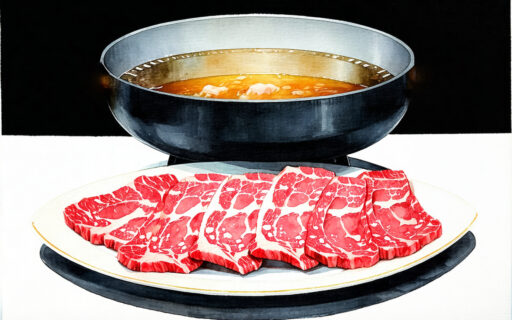
-
すき焼き
Sukiyaki is a Japanese hotpot where beef is simmered in a sweet soy-based broth with vegetables, tofu, and noodles. It is typically dipped in raw egg and enjoyed at gatherings and restaurants.
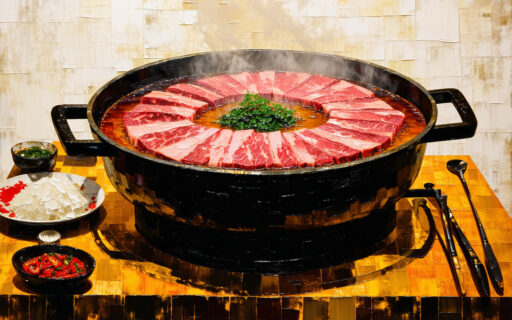
-
ちゃんこ鍋
Chanko Nabe is a hot pot dish made for sumo wrestlers, prepared in sumo stables. There’s no fixed recipe; ingredients and seasonings vary by stable. It’s hearty and nutritious, often including chicken, vegetables, and tofu.
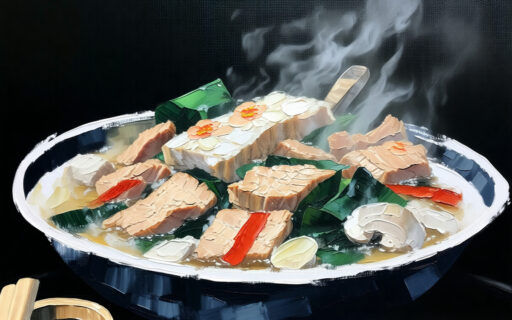
-
鉄板焼き
Teppanyaki is a cooking method where ingredients are grilled on a hot iron plate. It includes dishes like steak and okonomiyaki. At upscale restaurants, wagyu beef and abalone may be served and cooked before your eyes.

-
浜焼き
Hamayaki is a style of grilling freshly caught seafood near fishing ports. It highlights natural flavors, combining ocean aroma with smoky charcoal notes.
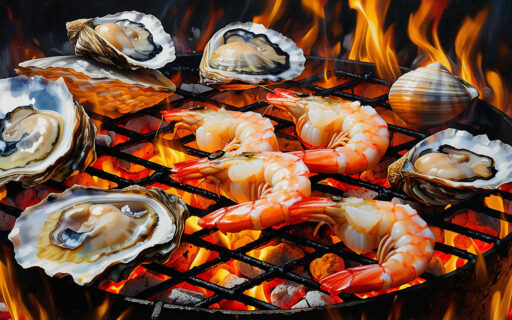
-
ふぐ刺し
A delicacy made by slicing the firm, muscular flesh of pufferfish into paper-thin pieces so thin that the plate’s design is visible beneath. Mild in flavor yet rich in umami, it is enjoyed with ponzu and grated chili radish as a refined Japanese specialty.

-
水炊き
Mizutaki is a local dish from Fukuoka, made by simmering chicken in plain water to extract natural flavors. Unlike other hot pots, it is not seasoned with soy sauce or salt during cooking.
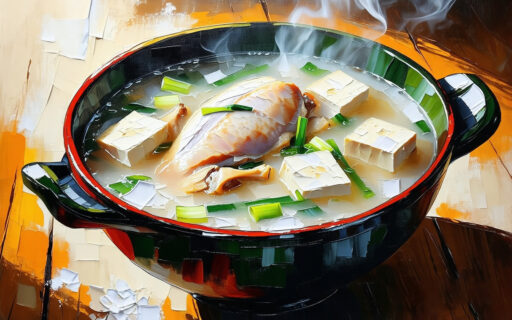
-
もつ鍋
Motsunabe is a local dish from Fukuoka, a hot pot of beef or pork offal with vegetables. It is hearty and ends with noodles or rice porridge.

-
もんじゃ焼き
Monjayaki is a pan-fried batter dish from Tokyo’s downtown, different in origin from okonomiyaki. Its unique look may surprise foreigners, but its savory flavor pairs well with drinks.

-
湯豆腐
Yudōfu is a simple hot pot made by warming water with kombu and gently simmering tofu. It is served with ponzu or soy sauce and condiments, highlighting the tofu’s delicate sweetness and warmth.

-
寄せ鍋
Yosenabe is a Japanese hot pot in which various ingredients—seafood, meat, vegetables, tofu—are “gathered together” and simmered in one pot. The broth becomes richly flavored, and ingredient combinations vary by season and household.
